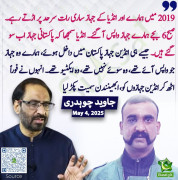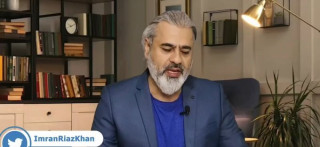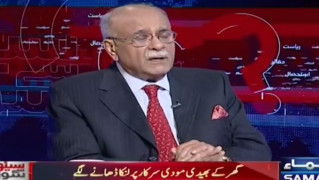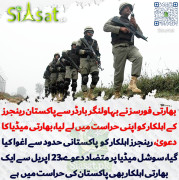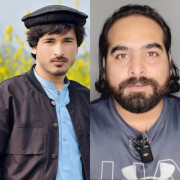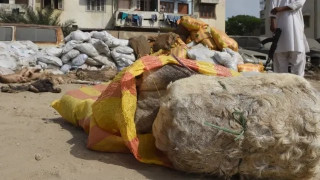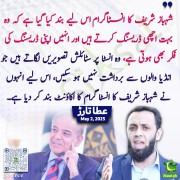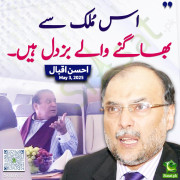Star Gazer
Chief Minister (5k+ posts)
These are some facts about the untouchables in india from, http://www.faqs.org" onclick="window.open(this.href);return false;
Please note here that the constituition has been amended but there is no amendment in the religious belief of the hindu therefore the change is unlikely to take place in the mindset of the hindutva. Also not the role of MKGandhi,he wanted to help them but keeping within the ambit of the hindu religion and also note how he protested when Ambidkar started a movement to get seperate status for the Harijans and thus an opportunity was lost for the true help to untouchables.
The Scheduled Castes is the legal and constitutional name collectively given to the groups which have traditionally occupied the lowest status in Indian society and the Hindu religion which provides the religious and ideological basis for an untouchable group, which was outside the caste system and inferior to all other castes. Today, untouchability is outlawed, and these groups are recognized by the Indian Constitution to be especially disadvantaged because of their past history of inferior treatment, and were therefore entitled to certain rights and preferential treatment.
M. K. (Mahatma) Gandhi, whose chief aim was liberation from colonial rule within a distinctive philosophical system based upon amhinsa (non-violence), believed in raising the status of Untouchables while retaining elements of the traditional caste system but removing the degrading stigma and manifestations of untouchability, and coined the term harijan (Children of God) to describe them. This term is still used widely today by the non-Scheduled Caste communities although many Scheduled Caste members have now rejected it. The other approach came from Dr B. R. Ambedkar, a brilliant Untouchable lawyer, who believed that only by destroying the caste system could untouchability be destroyed. Ambedkar became the chief spokesperson for Scheduled Castes who demanded recognition as a separate entity similar in status to Muslims, Sikhs and Christians. Ambedkar was forced to drop this demand after Gandhi threatened a hunger strike, but as a consequence Scheduled Castes were granted increased electoral representation and a guarantee of special protection and rights for them. Ambedkar also rejected Hindu values and in 1956 converted to Buddhism, later followed by about three million converts.
After Independence for a partitioned India in 1947, Ambedkar became Law Minister in the government of Jawaharlal Nehru and the drafter of the Indian Constitution of 1950. The Constitution states that no citizen should be discriminated against because of religion, race, or caste among other attributes, and should not be denied access to and the use of public services. However, despite these measures, there is still evidence that the law is often ignored and that untouchability continues, especially in rural areas.
Some estimates give a total of 2,000 deaths each year in land disputes in Bihar, most of the victims being landless labourers or small farmers. Landlord senas have been responsible for violent attacks on Scheduled Caste communities and there have been allegations that these attacks have been implicitly supported by police and leading politicians in the state government. After the most publicized of these incidents, politicians descend upon the village and many promises are made of compensation and justice. Yet few of the perpetrators of violence against Scheduled Caste communities are prosecuted by the government, and even fewer are convicted or sentenced.
Almost 90% of the Scheduled Castes still live in rural areas and economic exploitation remains their most acute problem. They are overwhelmingly marginal farmers or landless labourers. Large numbers migrate to cities or labour-scarce rural areas such as Punjab. Many are in debt and are obliged to work off their debts through debt-bonded labour despite the fact that this practice was abolished by law in 1976.
To date there has been some improvement in the levels of Scheduled Caste recruitment in the central civil service. From 1949 to 1979 this rose from 0.71% to 4.5% in Class I posts, from 2.01% to 7.3% in Class II posts, and from 7.03% to 12.35% in Class III posts. There has been a similar slow process in public-sector and nationalized industry posts, where positive discrimination did not begin until the 1970s. In private business and industry, however, there are no positive discrimination provisions and, therefore, progress has been limited. Members of the Scheduled Castes, however, are frequently over-represented in the lower Class IV posts and occupy almost all Class V posts (i.e sweepers a traditional Untouchable occupation
Places for Scheduled Castes in higher education, and especially for post-graduate posts, are sometimes not filled, either because of lack of qualified candidates or prejudice against qualified candidates. In 1981 there were riots in the state of Gujarat by high-caste students protesting against the system of reservation in education institutions, in which 42 people died.
Increasingly schceduled caste are refusing to accept their former degraded and subservient position and, if they are able to organize across barriers of language and sub-caste, should present a formidable challenge to government.
Please note here that the constituition has been amended but there is no amendment in the religious belief of the hindu therefore the change is unlikely to take place in the mindset of the hindutva. Also not the role of MKGandhi,he wanted to help them but keeping within the ambit of the hindu religion and also note how he protested when Ambidkar started a movement to get seperate status for the Harijans and thus an opportunity was lost for the true help to untouchables.
The Scheduled Castes is the legal and constitutional name collectively given to the groups which have traditionally occupied the lowest status in Indian society and the Hindu religion which provides the religious and ideological basis for an untouchable group, which was outside the caste system and inferior to all other castes. Today, untouchability is outlawed, and these groups are recognized by the Indian Constitution to be especially disadvantaged because of their past history of inferior treatment, and were therefore entitled to certain rights and preferential treatment.
M. K. (Mahatma) Gandhi, whose chief aim was liberation from colonial rule within a distinctive philosophical system based upon amhinsa (non-violence), believed in raising the status of Untouchables while retaining elements of the traditional caste system but removing the degrading stigma and manifestations of untouchability, and coined the term harijan (Children of God) to describe them. This term is still used widely today by the non-Scheduled Caste communities although many Scheduled Caste members have now rejected it. The other approach came from Dr B. R. Ambedkar, a brilliant Untouchable lawyer, who believed that only by destroying the caste system could untouchability be destroyed. Ambedkar became the chief spokesperson for Scheduled Castes who demanded recognition as a separate entity similar in status to Muslims, Sikhs and Christians. Ambedkar was forced to drop this demand after Gandhi threatened a hunger strike, but as a consequence Scheduled Castes were granted increased electoral representation and a guarantee of special protection and rights for them. Ambedkar also rejected Hindu values and in 1956 converted to Buddhism, later followed by about three million converts.
After Independence for a partitioned India in 1947, Ambedkar became Law Minister in the government of Jawaharlal Nehru and the drafter of the Indian Constitution of 1950. The Constitution states that no citizen should be discriminated against because of religion, race, or caste among other attributes, and should not be denied access to and the use of public services. However, despite these measures, there is still evidence that the law is often ignored and that untouchability continues, especially in rural areas.
Some estimates give a total of 2,000 deaths each year in land disputes in Bihar, most of the victims being landless labourers or small farmers. Landlord senas have been responsible for violent attacks on Scheduled Caste communities and there have been allegations that these attacks have been implicitly supported by police and leading politicians in the state government. After the most publicized of these incidents, politicians descend upon the village and many promises are made of compensation and justice. Yet few of the perpetrators of violence against Scheduled Caste communities are prosecuted by the government, and even fewer are convicted or sentenced.
Almost 90% of the Scheduled Castes still live in rural areas and economic exploitation remains their most acute problem. They are overwhelmingly marginal farmers or landless labourers. Large numbers migrate to cities or labour-scarce rural areas such as Punjab. Many are in debt and are obliged to work off their debts through debt-bonded labour despite the fact that this practice was abolished by law in 1976.
To date there has been some improvement in the levels of Scheduled Caste recruitment in the central civil service. From 1949 to 1979 this rose from 0.71% to 4.5% in Class I posts, from 2.01% to 7.3% in Class II posts, and from 7.03% to 12.35% in Class III posts. There has been a similar slow process in public-sector and nationalized industry posts, where positive discrimination did not begin until the 1970s. In private business and industry, however, there are no positive discrimination provisions and, therefore, progress has been limited. Members of the Scheduled Castes, however, are frequently over-represented in the lower Class IV posts and occupy almost all Class V posts (i.e sweepers a traditional Untouchable occupation
Places for Scheduled Castes in higher education, and especially for post-graduate posts, are sometimes not filled, either because of lack of qualified candidates or prejudice against qualified candidates. In 1981 there were riots in the state of Gujarat by high-caste students protesting against the system of reservation in education institutions, in which 42 people died.
Increasingly schceduled caste are refusing to accept their former degraded and subservient position and, if they are able to organize across barriers of language and sub-caste, should present a formidable challenge to government.

